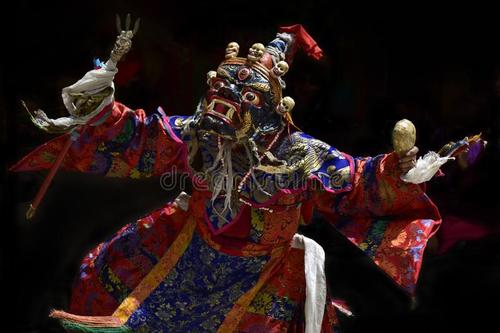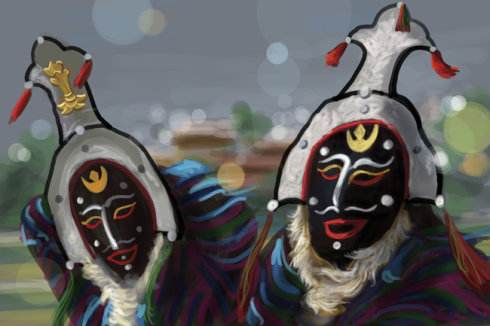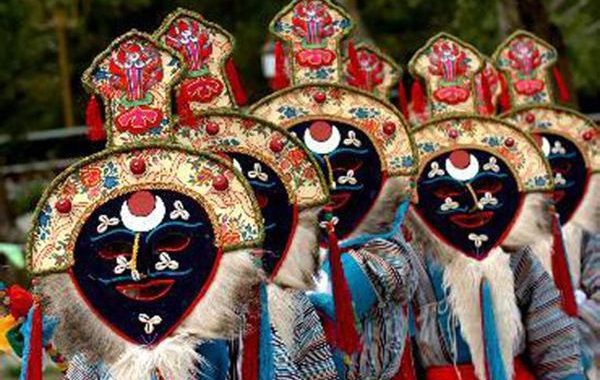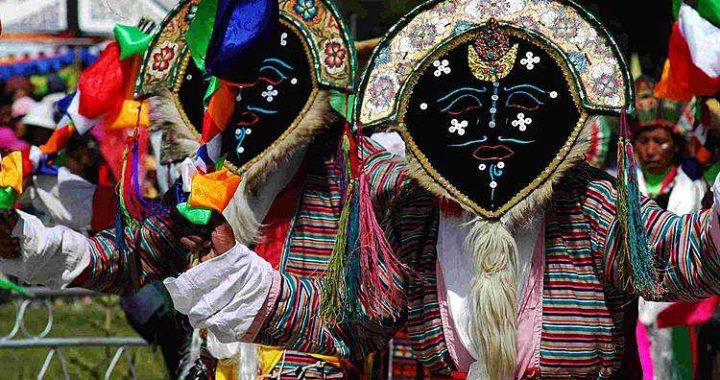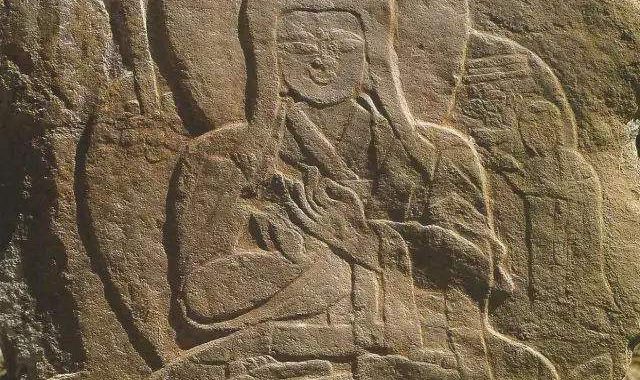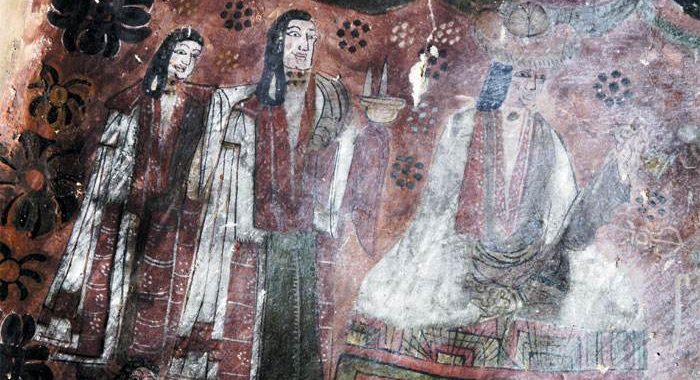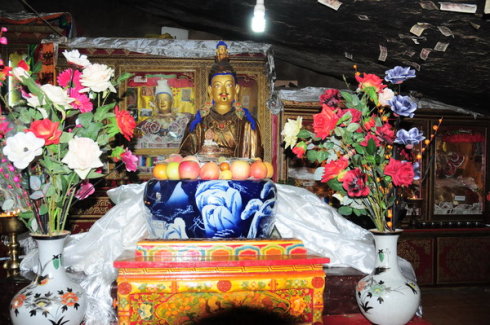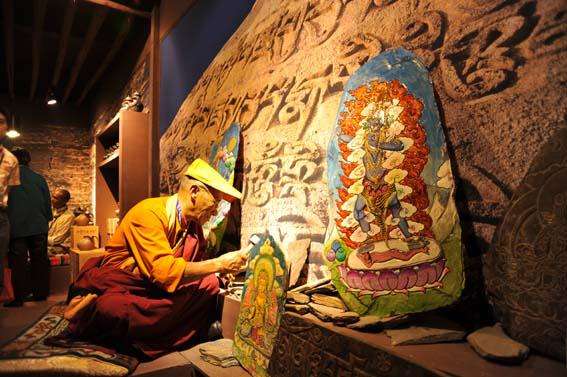The development of traditional folk singing and dancing
3 min readSarasvati, mentioned in the ancient music books in Tibet, was goddess presiding over music, dancing and singing. It was said that when a breeze blew across the South China Sea,a beautiful melody arose and Brahma listened to the music for 10 years and was entranced. As time passed, different voices of the sea fused and turned into the goddess of music.
When Shenrab Miwo presided over Gyung Drung Bon, the Cho(drum)dance, the Gal dance and Zhang Zhung Bon dances were regular features at Bon sacrificial rites and ceremonies.

In the era of Pude Gungyal during the Age of Tribes, the Ongkor Festival was to pray for a good harvest following the rapid development of agriculture in the Yarlung River Valley. At the festival, farmers drank barley wine and performed folk dances such as “Sgor-gzhas”throughout the night.
Acho Dance in the Tubo Period can be seen on the mural in Samye Monastery.
Then “Tzay Gzhas”or”Tyay Luh”performed at the celebration eventssuch as when Princess Wencheng from the Tang Dynasty or Princess Bhrikuti from Nepal married, and when it is held to celebrate the creation of Tibetan language by Thonmi Sambhota.

During the separatist regime period, singing and dancing Gzhas Chen, which was performed at the grand ceremonies of the Yarlung area, became popular in Ngari following the settlement of Tubo descendants.
The celebrations were fused with local culture to add brilliance to the colorful folk singing and dancing of Ngari.
During the rule of the Ladakh Kingdom, Guge Xuan stepped on the historical stage in the form of Dakini, playing a girl who sings and dances when paying religious homage to the Toling Monastery. Yabayama, adapted from the legend of King Gesar, became popular in Rutog County in Ngari.
After the Five Forefathers of the Sakyapa, specific performance programs were introduced. For example, Gzhas Suh(greetings with singing and dancing) was especially performed when receiving Sakya Chiqin. In the era of Desi Sangye Gyatso and founding of the Galdan pho brang regime, Gong Yun Geer was developed.

In the 16th century, monks created the Guelu talking-singing form.
The songs of great masters composed by the 6th Dalai Lama Tsangyang Gyatso were more or less “love songs.”Tsangyang Gyatso composed many popular Guelu songs based on folk songs that consisted of six words in verse and four lines in a paragraph for a song which was popular in central Tibet. Easy to understand, these songs became vastly popular among the people and some lyrics were recomposed into Nang-ma by Lhasa folk artists, thus refreshing them.
The performance of Sgor-gzhas
The Artists, Anai and Yeshe Drolma, are performing
Guibu Qin that appeared in the separatist regime period of Tibet added musical accompaniment to Sgor-gzhas, which it lacked previously, giving birth to a unique form of Stod-gzhas singing and dancing named Zhanian Xiabuzuo(six-string singing and dancing) by the local people. It quickly gained popularity in Dingri, Lazi and Sakya in the upper reaches of the Yarlung Zangbo River. In the 17th century, this form spread to Lhasa and evolved into Lhasa Stod-gzhas(“tap dance”).

Similar to Stod-gzhas, Nang-ma originated from the folk songs and dances in the Ngari area. After it spread to Lhasa, significant changes were experienced in specific urban areas such as Stod-gzhas. Nang-ma became the dance music with both adagio and allegro and a prelude in the fixed form of adagio dance. In the 18th century, Doren Denzen Banjue not only pioneered a traditional instrument music ensemble, but also created new Nang-ma works.
After Lhasa became the capital of the Tibet local government,a batch of “Gerba”artisans were attracted to play songs and dances, and many folk artists made a living by their performances. Such efforts made Stod gzhas and Nang-ma popular in Lhasa. In the 1950s, renowned artists, Anai and Yeshe Drolma hugely influenced society with their singing and dancing.
